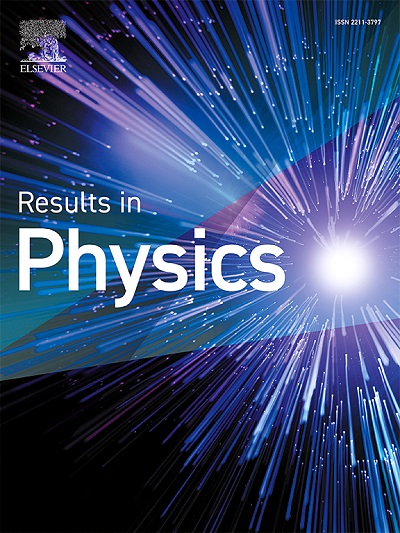Regulation of helium atom higher harmonic emission and attosecond pulse angle in inhomogeneous fields
IF 4.4
2区 物理与天体物理
Q2 MATERIALS SCIENCE, MULTIDISCIPLINARY
引用次数: 0
Abstract
With the rapid advancements in modern science, the interaction between laser fields and matter has become a focal point of research in various disciplines. In this study, we investigate high-order harmonic generation (HHG) modulated by spatially inhomogeneous laser fields, using helium atoms as a model system. Two types of nanostructures – single gold-tip and double gold-tip configurations – are employed to generate spatially non-uniform laser fields that interact with the helium atoms. Our results reveal that the angular orientation of attosecond pulses is significantly influenced by the inhomogeneous parameters of the laser field. For a single gold-tip nanostructure, when the inhomogeneous parameter along the x-axis is fixed at 0.002 and the parameter along the y-axis is varied from 0.002 to 0.006, the angle between the attosecond pulse and the x-axis shifts from 129°to 139°. In the case of a double gold-tip nanostructure, with the same variation in the y-direction parameter and the x-direction parameter held constant at 0.002, the attosecond pulse angle decreases from 115°to 102°. Different from previous studies, this paper combines two nanostructures and focuses on how the angle of attosecond pulse is affected by heterogeneous parameters, revealing new properties of attosecond pulse dynamics. These findings demonstrate the critical role of spatial field inhomogeneity in tailoring attosecond pulse dynamics.
非均匀场中氦原子高次谐波发射和阿秒脉冲角的调节
随着现代科学的飞速发展,激光场与物质的相互作用已成为各学科研究的热点。本文以氦原子为模型系统,研究了空间非均匀激光场对高次谐波的调制。两种类型的纳米结构——单金尖端和双金尖端配置——被用来产生与氦原子相互作用的空间非均匀激光场。结果表明,激光场的非均匀参数对阿秒脉冲的角取向有显著影响。对于单金尖端纳米结构,当沿x轴的非均匀参数固定为0.002,沿y轴的参数在0.002 ~ 0.006之间变化时,阿秒脉冲与x轴的夹角在129°~ 139°之间变化。在双金尖端纳米结构中,y方向参数变化相同,x方向参数保持在0.002不变时,脉冲角从115°减小到102°。与以往的研究不同,本文将两种纳米结构结合在一起,重点研究了非均质参数对阿秒脉冲角度的影响,揭示了阿秒脉冲动力学的新特性。这些发现证明了空间场非均匀性在调整阿秒脉冲动力学中的关键作用。
本文章由计算机程序翻译,如有差异,请以英文原文为准。
求助全文
约1分钟内获得全文
求助全文
来源期刊

Results in Physics
MATERIALS SCIENCE, MULTIDISCIPLINARYPHYSIC-PHYSICS, MULTIDISCIPLINARY
CiteScore
8.70
自引率
9.40%
发文量
754
审稿时长
50 days
期刊介绍:
Results in Physics is an open access journal offering authors the opportunity to publish in all fundamental and interdisciplinary areas of physics, materials science, and applied physics. Papers of a theoretical, computational, and experimental nature are all welcome. Results in Physics accepts papers that are scientifically sound, technically correct and provide valuable new knowledge to the physics community. Topics such as three-dimensional flow and magnetohydrodynamics are not within the scope of Results in Physics.
Results in Physics welcomes three types of papers:
1. Full research papers
2. Microarticles: very short papers, no longer than two pages. They may consist of a single, but well-described piece of information, such as:
- Data and/or a plot plus a description
- Description of a new method or instrumentation
- Negative results
- Concept or design study
3. Letters to the Editor: Letters discussing a recent article published in Results in Physics are welcome. These are objective, constructive, or educational critiques of papers published in Results in Physics. Accepted letters will be sent to the author of the original paper for a response. Each letter and response is published together. Letters should be received within 8 weeks of the article''s publication. They should not exceed 750 words of text and 10 references.
 求助内容:
求助内容: 应助结果提醒方式:
应助结果提醒方式:


